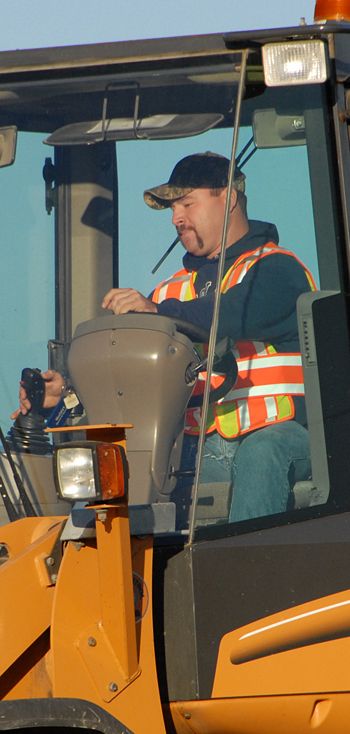132.2 Construction Inspection Guidelines for Safety Precautions
132.3.1 Personnel
Many hazards exist on a construction project. All personnel must be constantly alert to avoid injury. A few precautions that shall be taken to improve safety in especially hazardous situations are:
- a. Wear hardhats around overhead operations such as bridges or batch plants.
- b. Wear safety vests while working outside a vehicle and within 20 ft. of a traveled roadway.
- c. Post signs and flaggers when work must be done on highways open to traffic. "Survey Crew" signs, available by requisition as sign number W21-6a, should be located at least 500 ft. in advance of survey work. "Flagger Ahead" signs available as W20-7a, should be at least 500 ft. in advance of any necessary flagger. Tripods for the signs may also be requisitioned.
- d. Ensure adequate illumination is provided for night work.
MoDOT makes available to all personnel the Safety Policy, Rules and Regulations manual that covers the normal hazards we can expect to encounter. The resident engineer should see that all personnel study this manual and put into practice those parts of the manual that apply to construction work.
132.3.2 Traffic Control
Travelers must be protected from danger due to construction operations. A traffic control plan is included in the design plans and special provisions for each project. The resident engineer should select someone on each project to be responsible to ensure that signing and traffic control procedures are adequate and conform to the design plan or approved changes. Once the traffic control devices are in place, a day and nighttime drive through the project should be conducted at least once in both directions to ensure that traffic can safely and efficiently pass through the work zone area.
The location and erection of construction signs should be authorized by documentation record. Any discrepancies in signing and traffic control should be documented by an order record.
The district traffic engineer should be advised when a new detour or major change in traffic handling is anticipated. The district traffic engineer's comments should be solicited and considered in determining if adequate signing will be provided. Any proposed change in the traffic control plan should also be reviewed by the district traffic engineer.
If an unsafe condition develops, the contractor should be required to correct it. If the contractor fails to correct the unsafe condition, the work should be suspended and the contractor directed by written order to correct the hazard. Sec 105.1.2 provides the necessary authority. Sec. 105.14 provides the remedy for failure to provide maintenance required by Sec. 105.13.
Temporary lane tape is being used to direct traffic around rehabilitation areas such as structures. This presents a problem if this tape is used on the final paved surfaces whether the surface is asphaltic concrete or portland cement concrete pavement. The contractor should be required to remove the tape after it has served its purpose.
132.3.3 Occupational Safety and Health Act (OSHA)
This Federal act places an obligation on the employer to provide safe working conditions for all employees. Each project office has a copy of the ‘’Information Guide’’ on this subject prepared by AASHTO. The guide should serve to assist project forces in directing unsafe conditions to the contractor's attention.

